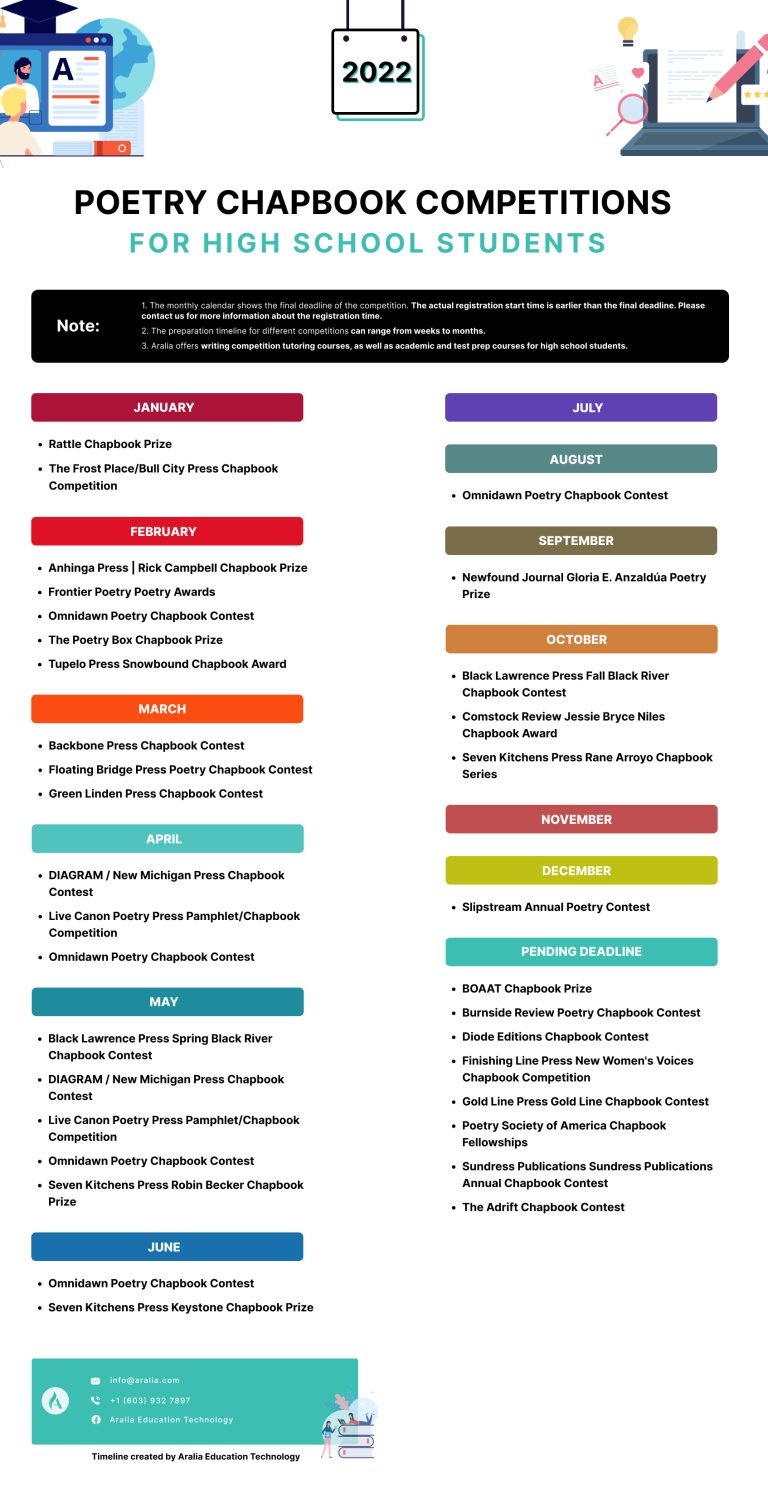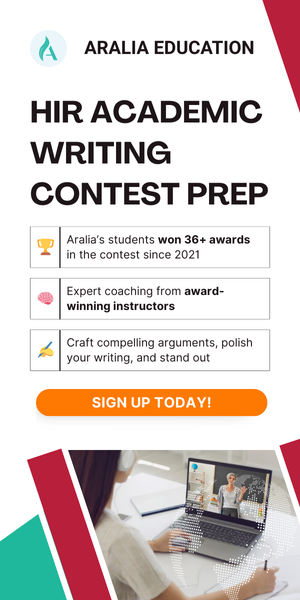1. What is a chapbook?
A chapbook is a small collection of poetry or other short pieces of writing, ranging from 20-40 pages. This is shorter than the standard printed poetry or short story collections bigger publishers do. Therefore, chapbooks are typically published by smaller publishers or are self-published. Moreover, chapbooks are typically saddle-stitched, which means that they are bound with staples along the spine, or with sewing threads.
The beauty of chapbooks falls in the content. Besides poetry, short stories, flash fiction, lyrics, and other genres are commonly published as chapbooks. Due to the small size and number of pages, the pieces of writing within each chapbook are connected with each other through a unified theme, question, or experience.
2. What chapbook competitions are out there?
In this article, we will focus on the poetry chapbook competitions available throughout the year. For the short stories, novels, and any genre in writing, in another article, we discussed 27 other writing competitions for the academic year of 2020-2021.
Overall, there are three outstanding poetry chapbook competitions that attract students from all around the world to participate in. We will provide the information on the top 2 chapbook competitions, and the full list of competitions can be found in the infographic below:

The BOAAT Chapbook Prize is hosted by BOAAT Press, a poetry book and chapbook publisher. BOAAT was founded in 2014 and has been helping students and other freelance poets publish their unique and outstanding work.
Due to the COVID pandemic, the 2021 BOAAT Chapbook Prize Competition is being delayed until further notice. Therefore, we don’t have information about the deadline or the guest judges. However, for general guidelines and the entry fee:
- Entry Fee: $15
Guidelines:
- Poems must be written in English and the submission should be 15 to 32 pages of poetry
- People of all ages are welcome to submit to the competition
Prize for the winning chapbook:
- A foreword by the Judge
- A $500 honorarium
- 25 printed chapbooks out of a first print-run of 300 (with ISBN)
Rattle is a publication of the Rattle Foundation, a non-profit organization. Rattle is committed to promoting the practice of poetry and a community of active poets. Rattle publishes in several forms, but the primary version is the quarterly edition of the print issue.
Rattle has opened forms for submission to their Rattle Chapbook Prize, more information can be found here:
- Deadline: January 15, 2024 (11:59 PM PST)
- Entry fee: $25
Guidelines:
- Open to writers, worldwide; poems must be written primarily in English
- Manuscripts may be 15 – 30 pages of poems
- Multiple entries by a single poet are accepted
Prizes: Three winners, judged by the editors of Rattle in an anonymous review, will receive $5,000 and 500 author copies of their chapbook, which will also be distributed to all of Rattle’s 7,000+ subscribers along with a future issue of the magazine. At least one of the winners will be a poet who has never published a full-length collection of poetry (48 pages or more).
3. How to write a poetry chapbook
The writing process is challenging, with multiple edits being made throughout the process. Once you publish your poetry chapbook, the thrill and feeling of relief comes, along with the concern of being criticized by the world. So, make sure you’re completely satisfied with the content and the chapbook before sending it to print. Here are some tips you should consider when writing your first poetry chapbook:
1. Know your theme
Imagine if you are a singer, or a music composer preparing for an album release, you will develop a consistent theme or concept. They can have similar tones, or different tones but all contribute to the one theme. Some instances for potential themes can be: love, struggle, weather, the city you live in, etc. The theme and concept are completely up to you since your chapbook should be a reflection of your personal style and your messaging intention.
There are several methods that can help you develop your theme. You should start writing down what topics you are passionate about, or what topics you want to explore further through the poetry medium. After you have a list of topics, you should be able to see one topic that sparks your interest the most, or the one topic that you are willing to read over and over again through the editing and revising process.
2. Proofread it carefully, but know when to distance yourself from your work
After all the efforts of creating a poetry collection, now it is time to edit. There are a couple of things you should note when you make edits:
- Select no more than 40 pages of poetry: Since chapbooks are generally smaller in size, you won’t be able to write a diverse collection of poems. Instead, you should focus on the brevity of your poems and how each poem influences the overall theme you are trying to express.
- Arrange the poems: You will have sparks about different topics within a theme, so when you arrange them together, they don’t sound coherent. Remember to print each poem out to have a big picture of your collection, then start arranging them. You should pay close attention to the first and the last poems within your collection. Readers are more likely to remember the first and the last one, and they will be inclined to read further if they like the first one.
- Edit and proofread it: Editing consists of both macro and micro editing. You should look at the macro first before editing the micro. Examples of macro editing include the title, the arrangement of the poems, and the tone of the poems. Examples of micro editing include grammar, punctuation, line breaks, etc. After editing both the micro and macro aspects, you can move on and proofread each piece. During this process, you can ask your family members, your teachers, and your friends to take a look at your poems.
- Distance yourself from your chapbook: During the editing process, you will find yourself completely satisfied with the content, or don’t know where to edit. In that case, we suggest you stay away from your poems for a while to create an emotional distance from your work. This temporary distance will allow you to separate from the emotions, and when you come back for a re-edit, you will potentially explore new perspectives and new ways to revise your poems.
3. Include cover art
Besides the first and last poems, cover art is an excellent way to give readers a tone, or a feeling of your poetry chapbook. You can illustrate the cover art yourself, or you can find templates on image-editing and image creating software and websites such as Canva, or Visme. Another way to create a cover art is to seek help from Fiverr or other creative hiring platforms. Since the designers on Fiverr already have an extensive amount of experience, they will be able to understand and visually communicate your idea.
4. How to make a chapbook

Making a chapbook is actually easier than you think, since there are guides and videos online available for you.
After you finish writing your poems, you can use InDesign to create a chapbook-like document. Depending on the size you want your chapbook to be, you can change the settings on InDesign. InDesign allows you to design your cover art and the back, and to have an overview of what your chapbook will look like before sending it to be printed. More detailed instructions can be found on this guideline. If you don’t have InDesign, you can use other design platforms like Canva. The only difference is that Canva doesn’t have an option for a booklet and a good system to perfectly align all the pages of your design.
After the design step, you will have to either staple or stab-stitch your chapbook. You can watch a guide video about this process here. The guideline is straightforward and you will have your first poetry chapbook!
5. How to Get Your Poetry Chapbook Published
Since chapbooks are typically smaller and thinner in size, you will be able to find great publishers and print your chapbook at a lower cost. Below are three ways to get your poetry chapbook published:
- Find a publisher: There are multiple chapbook publishers that you can reach out to, such as Red Bird Chapbooks, New Michigan Press, DIAGRAM, Rain Taxi, Slipstream, Hyacinth Girl Press, BatCat Presse, etc.
- Enter a competition: We mentioned 2 outstanding and desirable poetry chapbook competitions above, but there are so many more chapbook competitions out there. Some chapbook publishers will have a competition where a winner will receive a print run.
- Self-publish your chapbook: If you couldn’t find a publisher or competition that fits your style, consider self-publishing your chapbook. Self-publishing your chapbook is a robust and rewarding process, where you can customize each one with special notes for readers.
Creating and crafting a chapbook is such a novel and fun journey for poets, because it trains them to explore one concept at a time, within a limited space. High school students who are interested in poetry and are interested in participating in chapbook competitions, Aralia is opening a new session for our chapbook competition prep. More details are available below:
Students will dip their toes into the world of publishing-chapbook making. Participants will write and polish two short stories, assemble their work into a portfolio, and publish it in a stylish, professional manner in the form of a print or digital chapbook. Students will be given a background on the history of chapbook making as well as training in InDesign and lots of support through the writing and revision process.










